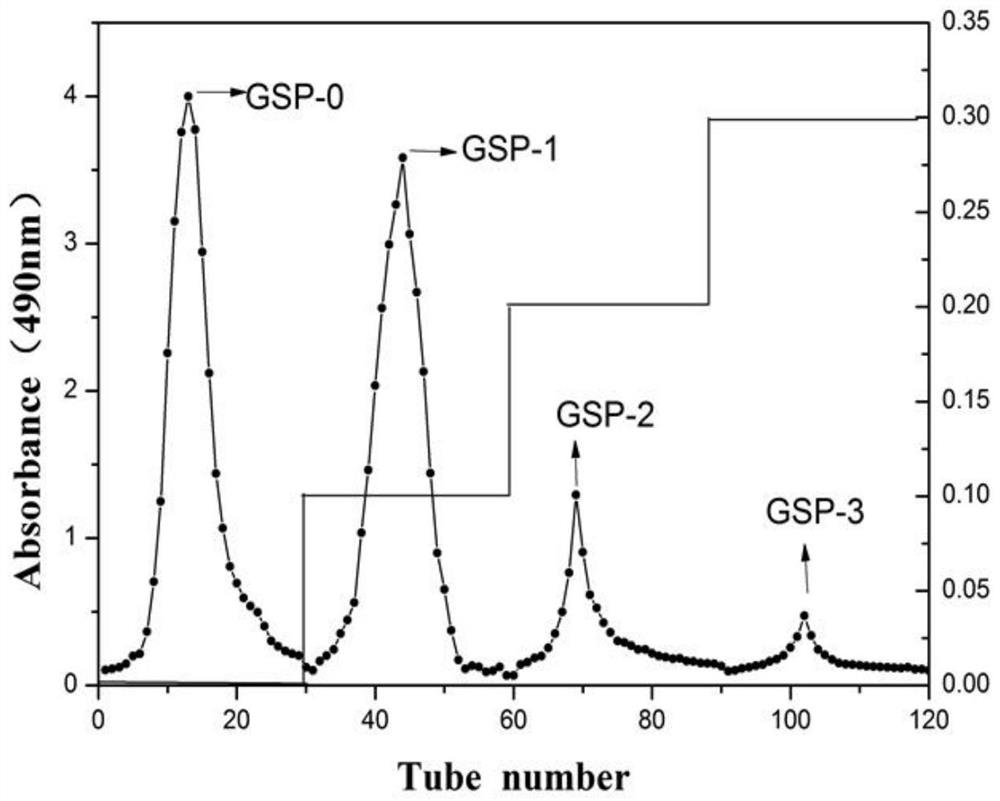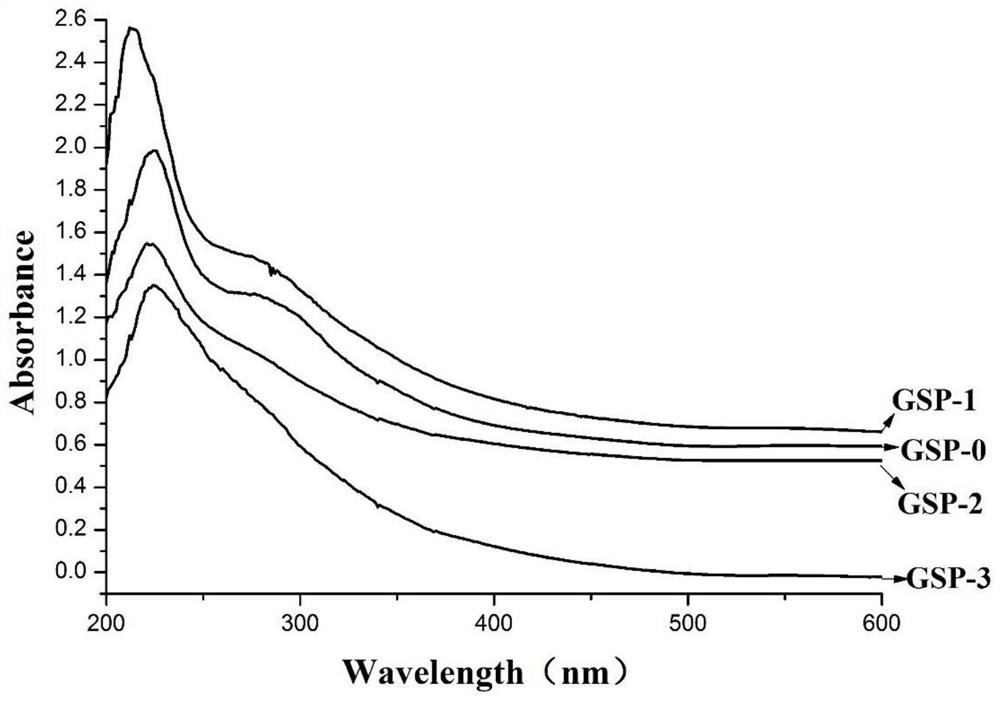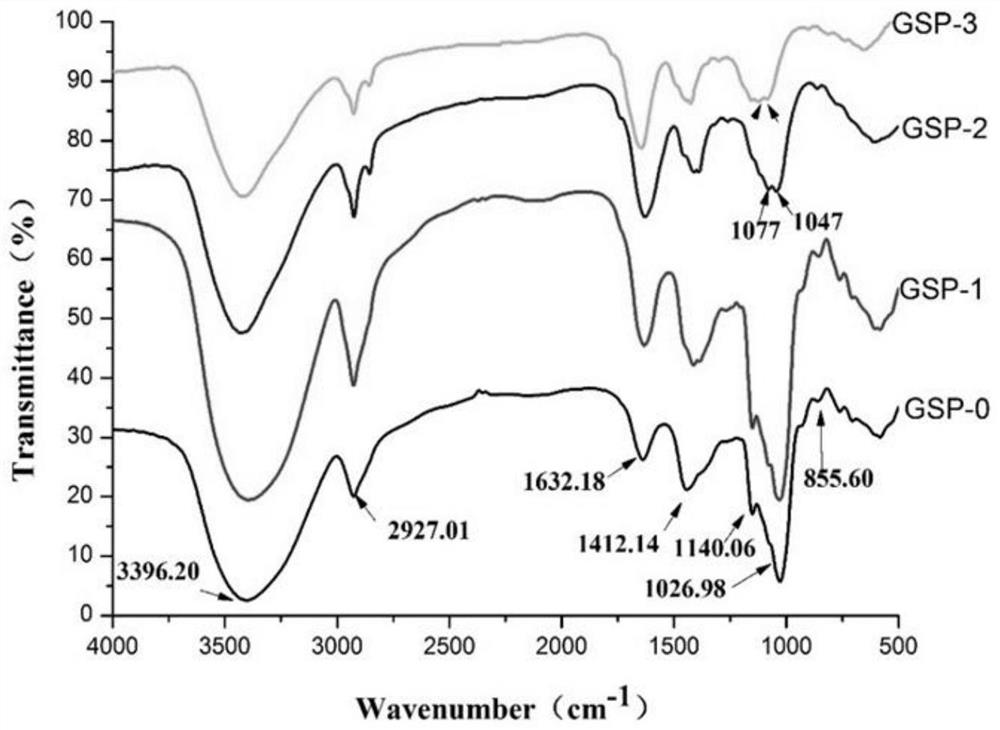Separation and characterization method of ginseng polysaccharide with immunomodulatory and anti-tumor activity
A technology of ginseng polysaccharides and immune activity, applied in the field of separation and characterization of ginseng polysaccharides, to achieve the effects of promoting value-added ability, promoting inhibition, good immunity and anti-tumor activity
- Summary
- Abstract
- Description
- Claims
- Application Information
AI Technical Summary
Benefits of technology
Problems solved by technology
Method used
Image
Examples
Embodiment 1
[0056] Example 1 Extraction, Purification and Content Determination of Ginseng Crude Polysaccharide
[0057] The raw material is the rhizome of ginseng from Changbai Mountain in Jilin Province, which is washed, dried, and crushed into powder with a pulverizer for later use. Take 5g of ginseng powder, use water as the extractant, and use microwave extraction method to extract; microwave extraction time is 6min, temperature is 70°C, solid-liquid ratio is 1:30 (mg / ml), power is 550W, extract and concentrate , dried to obtain ginseng crude polysaccharide, named GSP.
[0058] DEAE-cellulose pretreatment: Soak DEAE-cellulose dry powder in distilled water first, soak in 0.5mol / L HCl solution for 1-2 hours, then wash with distilled water until the pH value of the filtrate is neutral, drain the The DEAE-cellulose was soaked in 0.5 mol / L NaOH solution for 1-2 hours, then washed with distilled water until the pH value of the filtrate was neutral, and then packed into a column.
[0059] C...
Embodiment 2
[0065] The separation of embodiment 2 ginseng polysaccharides
[0066] DEAE-52 loading and elution. Specifically, weigh the purified ginseng polysaccharide, dissolve it with 5mL of distilled water, and slowly add it along the wall of the column when loading the sample, so as to prevent the filler from flying up and causing uneven sample loading. The neutral sugar fraction was first eluted with distilled water; the acidic sugar fraction was sequentially eluted with 0.1mol / L, 0.2mol / L, and 0.3mol / L NaCl aqueous solution at a flow rate of 1mL / min, collected in separate bottles, and collected every 5 minutes One bottle, each bottle is 5ml. Use the phenol-sulfuric acid method to measure the absorbance of each bottle of liquid, take the serial number of the vial as the abscissa, and take the absorbance A as the ordinate to draw the elution curve. The results are as follows: figure 1 shown.
[0067] Such as figure 1 As shown, the elution curve was obtained after being purified by...
Embodiment 3
[0068] The structural characterization of embodiment 3 ginseng polysaccharide
[0069] 1. Measurement and analysis of ultraviolet spectrum
[0070] Take 2.00 mg of isolated ginseng polysaccharide and dissolve it in 2 ml of distilled water, then scan it with a UV spectrophotometer in the range of 200-800 nm, and record the UV absorption spectrum.
[0071] Ultraviolet analysis: the scanning range is in the range of 200-800nm. from figure 2 It can be seen from the figure that GSP-0 and GSP-1 detected protein absorption peaks, indicating that there may be glycoproteins in these two polysaccharides, which is consistent with the speculation of the physicochemical properties in the purification stage. from figure 2 It can be seen that, GSP-2 and GSP-3, the spectral curves are relatively smooth, indicating that protein and nucleic acid impurities in GSP-2 and GSP-3 have been reduced to a minimum or do not exist.
[0072] 2. Determination and analysis of infrared spectrum and sec...
PUM
| Property | Measurement | Unit |
|---|---|---|
| Weight average molecular weight | aaaaa | aaaaa |
Abstract
Description
Claims
Application Information
 Login to View More
Login to View More - R&D Engineer
- R&D Manager
- IP Professional
- Industry Leading Data Capabilities
- Powerful AI technology
- Patent DNA Extraction
Browse by: Latest US Patents, China's latest patents, Technical Efficacy Thesaurus, Application Domain, Technology Topic, Popular Technical Reports.
© 2024 PatSnap. All rights reserved.Legal|Privacy policy|Modern Slavery Act Transparency Statement|Sitemap|About US| Contact US: help@patsnap.com










